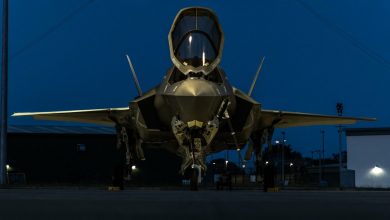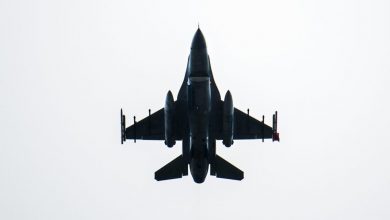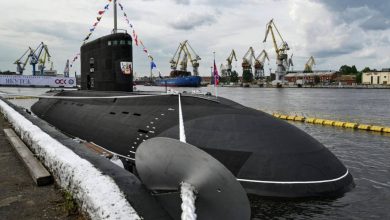Report: China’s MD-19 hypersonic drone lands flawlessly, shocks Pentagon

Somewhere above the South China Sea, a sleek, wedge-shaped craft slices through the atmosphere at speeds exceeding five times the speed of sound. Invisible to most radar systems, it maneuvers with precision, its mission shrouded in secrecy.
This is no science fiction fantasy—it’s China’s MD-19 hypersonic drone, a machine that landed on a conventional runway in December 2024 after a high-speed flight, marking a world-first achievement in aerospace technology.
Developed by a team of Chinese scientists and engineers, the MD-19 is more than a technological marvel; it’s a testament to China’s relentless pursuit of innovation and a signal of shifting dynamics in global military and economic landscapes. Why does this small, reusable drone matter, and what does it reveal about China’s ambitions?
The MD-19, a compact unmanned aerial system measuring roughly eight to eleven feet in length, represents a breakthrough in hypersonic flight. Unlike traditional drones, it can travel at speeds above Mach 5—over 3,800 miles per hour—while maintaining the ability to decelerate, transition to subsonic speeds, and land horizontally on standard runways.
This capability, demonstrated in tests conducted by the Qian Xuesen Science and Technology Youth Task Force, sets it apart from other hypersonic vehicles, which are often single-use or require specialized recovery systems.
According to a report in December 2024, the drone was launched from a Tengden TB-001, a medium-altitude, long-endurance combat drone, before autonomously completing its mission and landing safely. Another test saw it released from a high-altitude balloon, showcasing its versatility across different launch platforms.
These feats, documented in high-definition footage released by the Chinese Academy of Sciences, underscore a significant leap in engineering. Transitioning from hypersonic to subsonic flight demands advanced flight control systems, adaptive aerodynamics, and materials capable of withstanding extreme thermal and mechanical stresses. The MD-19’s success suggests China has overcome these challenges, a feat few nations can claim.
At the heart of the MD-19’s design is its aerodynamic architecture. Its wedge-shaped fuselage, delta wings, and canted vertical tails reduce drag and enhance stability at high speeds. Unlike air-breathing scramjet-powered vehicles, the MD-19 likely relies on a rocket engine, which eliminates the need for complex air intakes but limits its endurance compared to scramjet designs.
The drone’s compact size—smaller than its predecessor, the MD-22, which was unveiled at the 2022 Zhuhai Airshow—makes it agile and cost-effective. The MD-22, a four-ton hypersonic testbed capable of Mach 7 and a range of 8,000 kilometers, set the stage for the MD-19’s development.
While the MD-19’s exact specifications remain partially classified, its ability to carry payloads, potentially including reconnaissance sensors or experimental weapons, hints at its strategic value.
The drone’s reusable design further enhances its appeal, reducing costs and enabling rapid turnaround for subsequent missions. This operational flexibility, as reported by Defence-Blog.com, allows the MD-19 to operate from standard military airstrips, even temporary ones, without specialized infrastructure.
The technological prowess behind the MD-19 reflects China’s broader innovation ecosystem. The project, led by the Institute of Mechanics at the Chinese Academy of Sciences and the Guangdong Aerodynamic Research Academy, builds on years of research, including tests in the JF-12 hypersonic wind tunnel, one of the world’s most advanced facilities for simulating high-speed flight.
Gao Fei, a researcher involved in the project, described the drone’s control systems as incorporating “biological intelligence,” a term suggesting advanced artificial intelligence that mimics natural decision-making processes. This integration of AI enables the MD-19 to navigate complex flight paths autonomously, a capability that could redefine unmanned systems.
The involvement of institutions like Zhejiang University, known for its cutting-edge work in aerospace engineering, highlights the synergy between China’s academic, industrial, and military sectors. This collaborative model, backed by substantial government investment, has allowed China to accelerate its hypersonic programs, outpacing many Western counterparts in certain areas.
Historically, hypersonic technology has been a domain of intense global competition. The United States pioneered early hypersonic research with programs like the X-15 in the 1960s, which reached Mach 6.7 but relied on rocket propulsion and specialized recovery methods.
More recently, the U.S. Air Force’s X-51A Waverider and Stratolaunch’s Talon-A have tested air-breathing scramjet engines, but neither has achieved the reusable, runway-landing capability of the MD-19. Russia’s Kinzhal missile and Zircon cruise missile, while operational, are single-use weapons without the versatility of a reusable drone.
China’s progress, by contrast, builds on decades of investment in aerospace, catalyzed by figures like Qian Xuesen, the father of China’s space program. Deported from the United States in the 1950s after co-founding NASA’s Jet Propulsion Laboratory, Qian’s legacy looms large over projects like the MD-19, which his namesake task force continues to advance.
The strategic implications of the MD-19 are profound, particularly in the Indo-Pacific region. Its hypersonic speed and near-space altitude—between traditional airspace and low Earth orbit—make it nearly impossible to intercept with current missile defense systems, such as the U.S. Navy’s Aegis or the Army’s Patriot.
In a potential conflict, the drone could conduct real-time reconnaissance over contested areas like the Taiwan Strait or the South China Sea, providing critical intelligence to Chinese forces. Its ability to penetrate anti-access/area-denial [A2/AD] zones, as noted in a 2023 report by the Center for Strategic and Budgetary Assessments, could challenge U.S. carrier strike groups and forward bases in Guam or Okinawa.
The MD-19’s small size and low radar cross-section enhance its survivability, while its launch from platforms like the TB-001 or high-altitude balloons allows deployment deep into hostile territory without risking larger assets. Beyond reconnaissance, the drone could serve as a testbed for hypersonic weapons, such as precision strike vehicles or maneuverable warheads, further complicating defense planning.
Yet the MD-19’s significance extends beyond the battlefield. Its development underscores China’s economic strategy in high-tech sectors. Unlike U.S. hypersonic programs, which often face budget overruns and delays—such as the Air Force’s troubled AGM-183A ARRW, estimated at $1.2 billion for development—China’s approach leverages cost efficiencies.
By integrating commercial technologies, academic research, and state-backed enterprises, China can produce advanced systems like the MD-19 at a fraction of Western costs. This economic edge, as reported by Asia Times, allows China to iterate rapidly, testing multiple prototypes like the MD-19, MD-21, and MD-22 in parallel.
The TB-001, a relatively inexpensive drone developed by Sichuan Tengden, exemplifies this approach, serving as a versatile launch platform without the need for costly dedicated systems. This model contrasts sharply with the U.S., where defense contractors like Lockheed Martin and Boeing operate under stricter regulatory and budgetary constraints.
The human element behind the MD-19 adds a compelling dimension to its story. The Qian Xuesen Science and Technology Youth Task Force, a group of young engineers and scientists, embodies China’s emphasis on cultivating talent for strategic technologies.
Their work, documented in a promotional series by the Chinese Academy of Sciences and Hunan Satellite TV, reflects a cultural narrative of national pride and scientific ambition. The team’s achievement of nine test missions over six years, including the world’s first near-space launch and retrieval experiment, demonstrates a methodical approach to innovation.
This contrasts with the more fragmented U.S. ecosystem, where inter-service rivalries and contractor-driven priorities can slow progress. The MD-19’s success is a reminder that technology is only as strong as the minds behind it, and China’s investment in education and research is yielding tangible results.
Looking ahead, the MD-19 raises questions about the future of aerial warfare. Could it evolve into a platform for rapid, long-range strikes, challenging the role of traditional fighter jets like the U.S. F-35 or China’s own J-20? Its AI-driven autonomy suggests a shift toward network-centric warfare, where drones operate as nodes in a larger system, sharing data in real-time.
This vision aligns with China’s broader military modernization, which emphasizes integration across domains—air, sea, space, and cyber. The MD-19’s potential civilian applications, such as high-speed transport or atmospheric research, further blur the line between military and commercial technology.
For instance, the drone’s ability to operate at near-space altitudes could support scientific missions, much like NASA’s X-43A, which tested hypersonic flight for aerospace research.
Comparatively, the U.S. remains a leader in stealth and precision-guided munitions but lags in operational hypersonic systems. The Pentagon’s Hypersonic and Ballistic Tracking Space Sensor, still in development, aims to counter platforms like the MD-19, but its deployment is years away.
Russia, while advanced in hypersonic missiles, lacks the reusable drone technology demonstrated by China. India’s Hypersonic Technology Demonstrator Vehicle, tested in 2020, is promising but far from operational. These disparities highlight China’s strategic focus on hypersonic drones as a force multiplier, capable of reshaping deterrence models in the Pacific.
The MD-19’s emergence also carries psychological weight. Its high-profile tests, publicized through state media and social platforms like X, project an image of technological superiority. A post from @zaobaosg on December 18, 2024, celebrated the drone’s horizontal landing as a “major breakthrough,” amplifying China’s narrative of progress.
This messaging, aimed at both domestic and international audiences, underscores the drone’s role in soft power projection. For U.S. policymakers, the MD-19 is a wake-up call, highlighting the need for greater investment in hypersonic defense and countermeasure technologies.
From an analytical perspective, the MD-19 is a milestone, but not a game-changer in isolation. Its true impact lies in what it represents: China’s ability to integrate cutting-edge technologies—AI, hypersonics, and unmanned systems—into a cohesive platform.
This holistic approach, combining technical innovation, economic efficiency, and strategic foresight, challenges the U.S. to rethink its own development models. The drone’s reusability and flexibility suggest a future where hypersonic systems are not just weapons but versatile tools for a range of missions.
Yet questions remain. Can China scale the MD-19’s technology for larger, operational systems? Will its reliance on rocket propulsion limit its endurance compared to scramjet-powered rivals?
And how will the U.S. respond to this new variable in the Indo-Pacific equation? As the MD-19 takes flight, it carries with it the weight of these uncertainties, signaling a new chapter in the global race for technological dominance.





